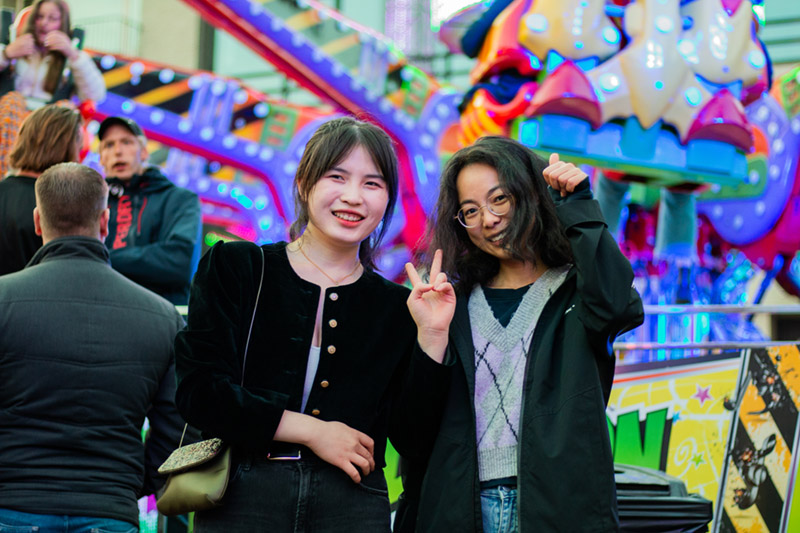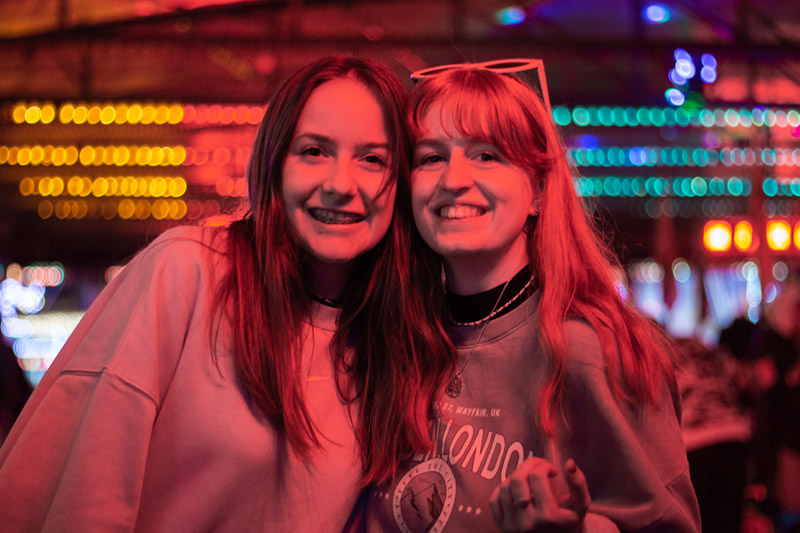Bearded ladies and steam-powered rides
How students saved the May Fair
The air carries the smell of freshly fried churros and cotton candy while the lights from attractions reflect on the visitors’ faces that glow with excitement. The ticket queues are endless, the music is loud, and the rides don’t stop until 1 a.m.
A flashy, mist-filled collection of rides, games, and haunted houses, that’s the Groningen May Fair we know and love today. But in its earlier days, the fair’s biggest attractions were people.
Acrobats and sword swallowers, dwarves and bearded ladies gave the fair – which has been around since 1668 – the feel of a travelling circus. Performers balanced on bicycles and walked on tightropes, while clowns played the trumpet. Adults and children alike gathered to witness these wonders, which they would otherwise never get to see.
Steam power
Towards the end of the 19th century, the introduction of steam power to the fairground offered visitors a new form of entertainment: rickety rides with questionable security that was eagerly overlooked by fair-goers.
Spinning platforms were a big attraction, as people would pile on, enjoying the ride until they jumped off as soon as they became too dizzy. Spectacular performances were still popular at this time, but the showcasing of disabled or different bodies as ‘wonders’ began to die down towards the 20th century.
The fair was not always met with open arms by everyone, though. Stad van het Noorden, a book about the city of Groningen edited by historian and retired UG professor Maarten Duijvendak, recounts how ‘upstanding citizens’ attempted to put an end to the May Fair several times during the late 19th and early 20th century. They felt it didn’t align with their Christian values.
Negative influence
The drinking and roistering at the fair was also a problem. The senate of the Groninger Academie sent a letter to the editor of the local newspaper, pleading with the city council to shut down the fair ‘for the good of academic education’. Or if that wasn’t an option, to at least move it to the summer break. They felt the fair had a negative influence on the students’ work ethos.
The senate’s plea fell on deaf ears, though. And even when a ride malfunction in 1920 cost four people’s lives, the city council still voted in favour of keeping the fair around.
Nevertheless, its popularity started to dwindle after the Second World War and the May Fair might have disappeared after all, if it hadn’t been for a large influx of students in the 1970s and 80s. They were happy to spend hours, if not days, going on the rides – as students today still do.
Fun at the fair
Text and photos by Zuzana Ľudviková

Manman Liu and Xiaoya Hao
Media studies students Manman Liu and Xiaoya Hao return a bit dizzy but smiling from the Glider, one of the most popular attractions at the May Fair. ‘It was so much fun’, says Manman, and Xiaoya nods in agreement. When asked whether they feel sick, they give a pro-tip: ‘Don’t eat before the ride!’
They like the fair in Groningen more than the ones at home in China. ‘The attractions aren’t high enough there’, explains Xiaoya. But when they look at the crowd gathering around the Glider, they say they don’t feel like going again. ‘There’s no queue, so you have to be quick if you want to grab a seat.’

Krisztina Vizoli and Anita Imbrea
Best friends Krisztina Vizoli (media studies) and Anita Imbrea (biology) from Romania have just stumbled out of the bumper cars for the sixth time. ‘And we’d do it again’, says Krisztina. ‘You get to experience how it feels to hit something’, says Anita. ‘Because when you drive a real car, you can usually only wonder.’ With a big smile, Krisztina adds: ‘And having only a gas pedal and no breaks gives you more freedom!’
This is already their second night at the fair, Anita explains. ‘I wouldn’t have thought that Groningen could set up something like this, because the local festivals I went to weren’t that good. This fair is so much better.’

Derk van Wageningen
Still shaky from the Future Dance ride in the middle of Grote Markt, law student Derk van Wageningen enthusiastically starts to describe the experience to his friends. ‘At first I thought: this isn’t too bad, because it was only spinning me around. Then, it got more and more intense, and I was jerked around quite a bit by all the forces going on. But I liked it a lot!’
As a born and bred Groninger, Derk has been going to the May Fair for ages. ‘In high school, I used to go every year, so I missed it quite a lot when we were in lockdown. I’m happy that the May Fair is finally back.’